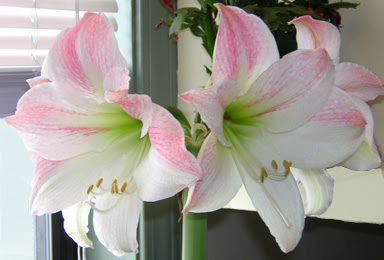 I've got a friend who's in love with a wonderful guy. The interview process for that position is really quite simple. You take one look at the fellow and if you like what you see, he's got the job. Why bother checking references when you know in your heart he's the one? (I speak from personal experience.)
I've got a friend who's in love with a wonderful guy. The interview process for that position is really quite simple. You take one look at the fellow and if you like what you see, he's got the job. Why bother checking references when you know in your heart he's the one? (I speak from personal experience.) So, she's in love and you'd think she'd be thrilled, but she's not. Instead, she's dedicating most of her energy to pushing this thing forward on a ridiculously fast timetable. So far, he's compliant, though that won't last long and these are the times when it's just no fun being on the outside looking in.
So, she's in love and you'd think she'd be thrilled, but she's not. Instead, she's dedicating most of her energy to pushing this thing forward on a ridiculously fast timetable. So far, he's compliant, though that won't last long and these are the times when it's just no fun being on the outside looking in.It reminds me of my neighbor and his thousand dollar trees. After he built his house, the lawn team planted mature 40-foot trees so it would look like he's lived there forever. The trees died and so did his passion to fit in, because I noticed the place is up for sale.
 Like it or not, life plugs along at a slow and steady pace. It takes 10 years to grow a garden. 20 years to grow a child. 40 years to grow a tree that will be around long after you're gone.
Like it or not, life plugs along at a slow and steady pace. It takes 10 years to grow a garden. 20 years to grow a child. 40 years to grow a tree that will be around long after you're gone.Sure, you can muscle that timetable. The flowers will bloom and then they'll fizzle. Some kids spend a lifetime searching for a happy childhood. A good, strong wind takes down a weak tree easy enough.
And, that's why I wish more people would appreciate the lost art of planting seeds. It's the process, not the end result, that makes life worth living.
Come summer, my little seedlings will get bigger and stronger every day. Then I'll spot a bud. The next day a flower. And, I will have savored every moment of nurturing them along the way.
Because in the end, isn't this what life is really all about? The ups and downs we experience, while quietly cultivating a beautiful thing?
Tips
- Start perennial seedlings indoors 12-14 weeks before transplanting.
- 16 oz. clear plastic drinking cups make ideal planters, allowing healthy root growth.
- Avoid anything with the word 'Jiffy' on it. Compressed peat pellets aren't as great as you'd think. For one, they're expensive. Plus the outer mesh bag doesn't decompose in the soil and seedlings quickly become root bound.



